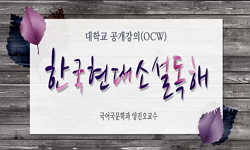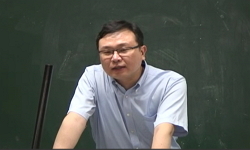This article aims to discuss translation and reception of Russian literary work by Mikhail Petrovich Artsybashev (1878-1927) in Korea and China in 1920s. Firstly, translation of the novel by Artsybashev into Korean and Chinese was through what’s sou...
http://chineseinput.net/에서 pinyin(병음)방식으로 중국어를 변환할 수 있습니다.
변환된 중국어를 복사하여 사용하시면 됩니다.
- 中文 을 입력하시려면 zhongwen을 입력하시고 space를누르시면됩니다.
- 北京 을 입력하시려면 beijing을 입력하시고 space를 누르시면 됩니다.

1920년대 한국과 중국의 러시아 소설 수용 양상에 관한 비교 고찰 = A Comparative Study on the Reception of Russian Novel in Korea and China in 1920s - A Case of M. P. Artsybashev’s Novels -
한글로보기https://www.riss.kr/link?id=A102637633
- 저자
- 발행기관
- 학술지명
- 권호사항
-
발행연도
2016
-
작성언어
Korean
- 주제어
-
등재정보
KCI등재
-
자료형태
학술저널
- 발행기관 URL
-
수록면
7-32(26쪽)
- 제공처
- 소장기관
-
0
상세조회 -
0
다운로드
부가정보
다국어 초록 (Multilingual Abstract)
This article aims to discuss translation and reception of Russian literary work by Mikhail Petrovich Artsybashev (1878-1927) in Korea and China in 1920s. Firstly, translation of the novel by Artsybashev into Korean and Chinese was through what’s source text. Secondly, how to be appropriated in Korea and China in 1920s?
In the late 1910s and early 1920s, translation of the novel by Artsybashev into Japanese by Nobori Shomu and Nakajima Kiyoshi was very influential in Japan. The Korean students studying abroad in Tokyo was acquainted with the novel by Artsybashev through those. In 1920s, the Korean intellectuals translated four novel works by Artsybashev which entitled “The Night”, “The Happiness”, “The Bloodstain”, “Horror”.
In 1920s, the most influential Chinese-language collection of Artsybashev’s stories was Xuehen (The Bloodstain) published by Kaiming (Enlightenment) Book Company in March 1927. It brought together “The Bloodstain” and “Pasha Tumanov” translated by Zheng zhenduo, “Morning Shadows” and “Nina” by Shen zhemin, “The Revolutionary” by Hu yuzhi, “The Doctor” by Luxun. The Chinese translation was translated not through Russian original text but through intermediary translation in English or German.
The Chinese translators recalled the suffering they have experienced in the course of the anti-imperialist and anti-capitalist movement in reading the works of the revolutionary material by Artsybashev. And they accept those as a text for overcoming the barriers of reality and inspire the revolutionary struggle will. In contrast, because subjected to colonial situations, the Korea translators has translated to learn the realism technique, and from expectations for the nation emancipation and the socialist movement.
목차 (Table of Contents)
- Ⅰ. 들어가며
- Ⅱ. 아르치바셰프 작품의 번역과 수용(1) : 1920년대 한국
- Ⅲ. 아르치바셰프 작품의 번역과 수용(2) : 1920년대 중국
- Ⅳ. 나오며
- Works Cited
- Ⅰ. 들어가며
- Ⅱ. 아르치바셰프 작품의 번역과 수용(1) : 1920년대 한국
- Ⅲ. 아르치바셰프 작품의 번역과 수용(2) : 1920년대 중국
- Ⅳ. 나오며
- Works Cited
- Abstract
동일학술지(권/호) 다른 논문
-
- 한국동서비교문학학회
- 박문정(Moonjung Park)
- 2016
- KCI등재
-
『클레프트족 이야기』에 재현된 선사시대와 로마시대의 여성관
- 한국동서비교문학학회
- 박선화(Sunhwa Park)
- 2016
- KCI등재
-
- 한국동서비교문학학회
- 안숙현(Sukhyeon Ahn)
- 2016
- KCI등재
-
- 한국동서비교문학학회
- 원혜영(Haeyoung Won)
- 2016
- KCI등재





 DBpia
DBpia







